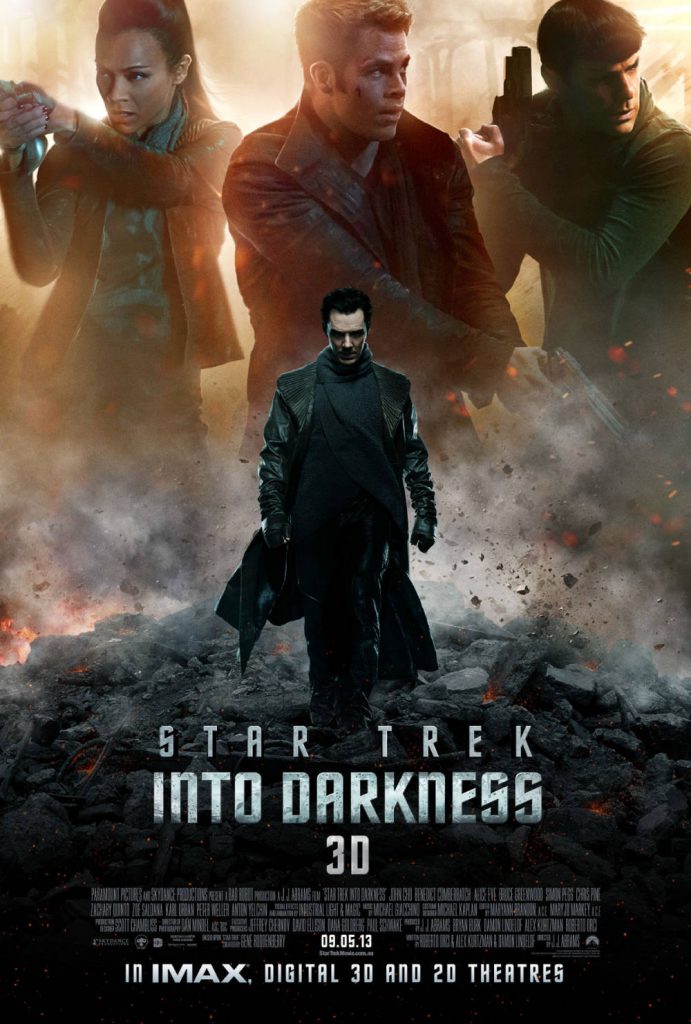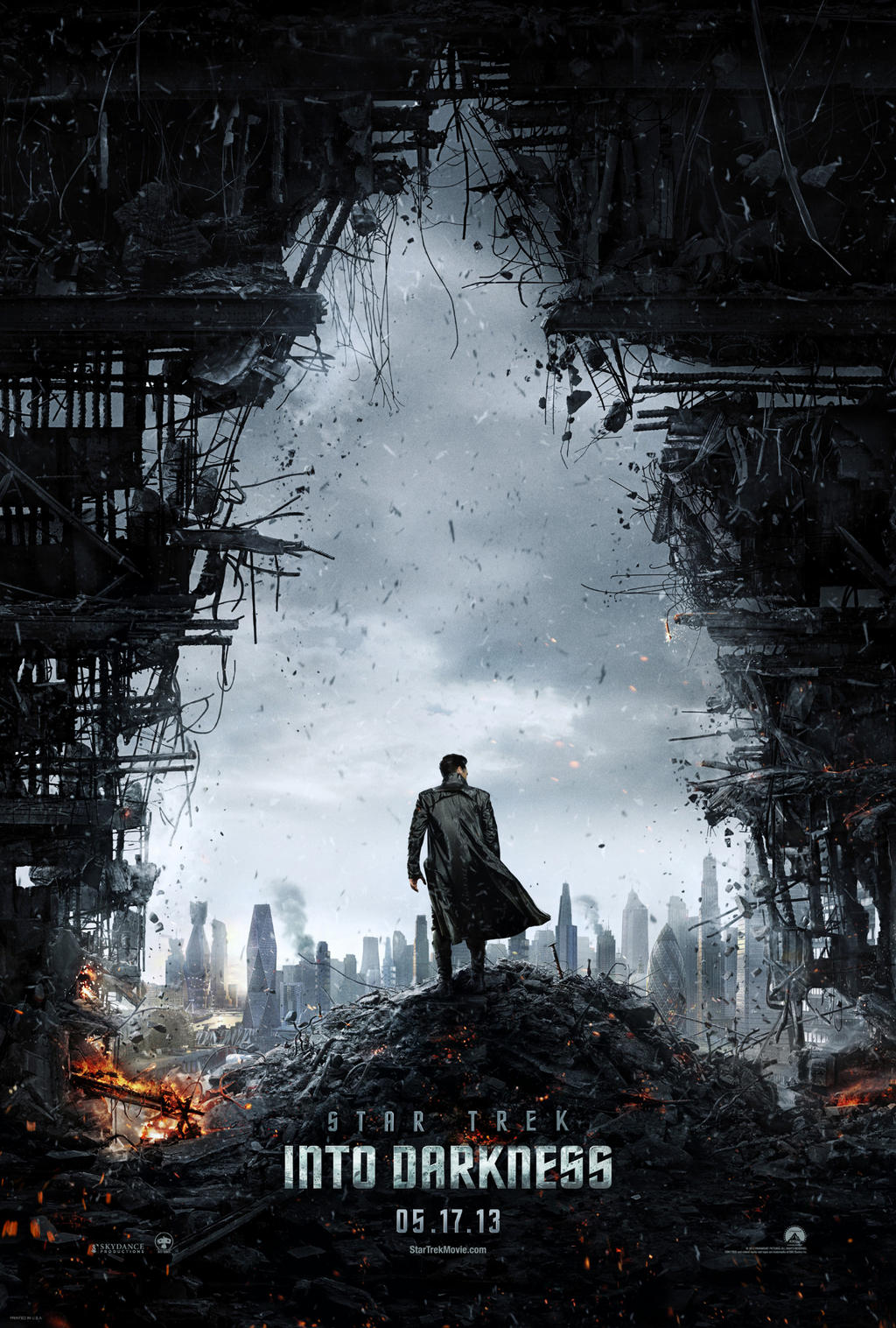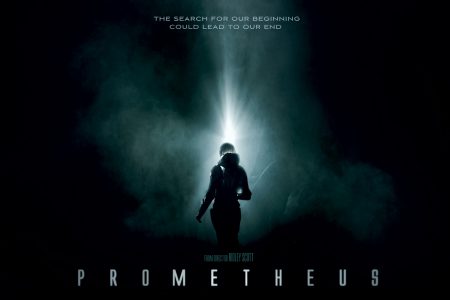I really enjoyed the Star Trek reboot from JJ Abrams. This is despite the fact that they blew up Vulcan just to emphatically state that this was a completely new Star Trek (not cool, Abrams) and that the villain of the piece wasn’t particularly good. It didn’t have a lot of what made Star Trek so popular in the first place, but it was a film that meant we would get new Star Trek films, so it achieved its aim. And Karl Urban was fantastic as Doctor McCoy.
This meant that I was looking forward to the sequel, even with its silly name, especially with the marvellous Benedict Cumberbatch as the villain. Now that I’ve seen the film, I’m left feeling disappointed and the only way to talk about these disappointments is to discuss the film in spoilerific detail. So please look away if you have yet to see the film and want to view without any prior knowledge, which is the best way to enjoy a movie these days (I only watch teaser trailers, if possible).
WARNING: SPOILERS AHEAD
LAST WARNING: VERY LONG DISCUSSION OF A FILM AHEAD
It is a truth universally acknowledged that Star Trek II: The Wrath Of Khan is the best of the Original Series Star Trek films. (The rule of even-numbered Star Trek films was broken with Nemesis. Also, I think that Star Trek: First Contact was the best of the Star Trek films, but that’s another discussion.) It used the history of the series, it used the characters well, it had a great villain, and it had Spock die – it deserves the respect. Therefore, I was always bemused and perplexed when, immediately following the success of the reboot, there was discussion that the sequel would the new Trek’s version of Khan. It seemed the most counterintuitive suggestion I had ever heard – the entire point of the reboot was to establish a completely new Star Trek that would have the characters and the set-up but could do absolutely anything it wanted, so why would it discard any credibility it had by attempting to replicate in its first sequel the best-remembered original Star Trek film? Why would anyone even think about it? It’s absurd. Isn’t it?
I’m a fan of comic books, so I’m used to imagination-lacking decisions to reboot series or universes and rehashing classic old stories in the new version. However, comic books are small potatoes; a film franchise is a multi-million dollar enterprise (if you’ll pardon the pun), so I thought there was no way anything as silly as that could happen with so many people responsible for it. It turns out, I was wrong.
Instead of coming up with a strong story of their own, the creators of Star Trek Into Darkness worked from the standpoint of ‘Wouldn’t it be cool if … we did our version of Khan?’ and little else. The ‘Wouldn’t it be cool if …’ approach was applied everywhere: the opening scene is an exhilarating pre-credits sequence where the crew of the Enterprise break the Prime Directive to intervene in the destruction of a planet, where they hide the Enterprise underwater and stop the planet-destroying volcano with a cold fusion bomb. It looks great (‘Wouldn’t it be cool if … the Enterprise rises out of the water?’) and it’s very exciting, but a spaceship designed for the vacuum of space can’t handle the pressure of water on top of it, and I’m pretty sure that the impulse engines weren’t designed to handle seawater, making me doubt that the ship could actually move. But it looks great, so let’s ignore the lack of logic.
The story, pretty much like the first one, is all about Kirk – after breaking the Prime Directive (Kirk lied on his report but Spock, who nearly died planting the bomb in the volcano, was truthful in his report), Admiral Pike takes away Kirk’s command (for this and other rule-bending) and then it’s all about Kirk maturing into his deserving the command of a spaceship and its crew instead of the lottery win of captainship in the first film. Meanwhile, Cumberbatch has persuaded Noel Clarke to blow up a Starfleet archive in London (future London looks very impressive in this film, consisting of variations on the Shard and the Gherkin), which causes all the top admirals and their first officers (Pike has given Kirk a second chance as first officer on the Enterprise under him) to convene at Starfleet Command to discuss the event, because apparently they don’t have video conferencing in the future, which gives Cumberbatch the opportunity to attack them in one location, killing Pike in the process. (Killing good but periphery characters early in the reboot sequel is becoming a tradition – Irene Adler is needlessly bumped off in the first section of the Robert Downey Jr Sherlock Holmes sequel.) They discover that Cumberbatch has escaped to the Klingon homeworld of Kronos, and Kirk is given permission by Admiral Marcus (Peter Weller) to hunt him down and kill him, with the use of 72 long-range photon torpedoes, just in case one isn’t enough because, erm, reasons?
Kirk wants to kill Cumberbatch but eventually decides to capture him and bring him back to justice. They decide to use a shuttle they acquired from the ‘the Mudd incident’ (nice casual reference to past Trek lore) to get him, but they get attacked by Klingons (an aside: I thought the new Klingon design was very cool) – they land so that Uhura can talk them out of it (one of the few incidences of a woman does something strong and brave in the film, unfortunately), only for it to go wrong and for Cumberbatch to save them by killing Klingons with a big gun.
 It was at this point that I started to worry about Cumberbatch’s identity, as he singlehandedly takes on Klingons in unarmed combat – I had avoided any discussion or news items about the film beforehand – and, after peacefully surrendering to Kirk, he does admit that he is Khan, the same genetically engineered Khan from the original Star Trek, who had been awakened from his suspended animation by Admiral Peter Weller to design new weapons and ships for Weller’s impending war with the Klingons under threat of killing the rest of his crew. This reveal made me a little nervous (see earlier paragraphs) but I held up hope that they would do something different, something new. I was wrong.
It was at this point that I started to worry about Cumberbatch’s identity, as he singlehandedly takes on Klingons in unarmed combat – I had avoided any discussion or news items about the film beforehand – and, after peacefully surrendering to Kirk, he does admit that he is Khan, the same genetically engineered Khan from the original Star Trek, who had been awakened from his suspended animation by Admiral Peter Weller to design new weapons and ships for Weller’s impending war with the Klingons under threat of killing the rest of his crew. This reveal made me a little nervous (see earlier paragraphs) but I held up hope that they would do something different, something new. I was wrong.
Admiral Peter Weller arrives in his Khan-designed super spaceship to kill everyone to cover his tracks, only for Scotty to shut down its guns and save the Enterprise after luckily sneaking aboard the spaceship after Khan had told Kirk the coordinates for the secret hangar, and Kirk had told Scotty (even though Kirk is in Klingon space and Scotty is back on Earth, they manage to have a normal conversation on Scotty’s communicator – really?). Abrams obviously likes his ridiculous coincidences (see the first film’s ridiculous dumping of Kirk on the same planet that happens to have the future Spock, as well as Scotty). Kirk and Khan team up to take on Admiral Peter Weller (we should have guessed he was evil because he had already played a villain in Star Trek: he was a villain in Enterprise), which sees Weller’s skull crushed by super-strong Cumberbatch, who then gets the super spaceship and attacks Enterprise.
It’s at this point that this film does its remix version of Star Trek II: The Wrath Of Khan. Instead of Kirk tricking Khan, it’s Spock who tricks him, and it’s Kirk who goes into the radioactive chamber to fix the warp drive to save the Enterprise. It gets worse – Spock comes to talk with him through the window, their hands placed over each other through the window, Kirk does a Kirk version of ‘I am and always will be your friend’ speech before he dies – even though you know that they are not going to kill Kirk in the second film. Then comes the worst bit: instead of Kirk shouting ‘KHAAAAN!’, Spock shouts it when Kirk dies. This is a thing that happened. I couldn’t believe they did it. I felt so sorry for Zachary Quinto – I think he’s great as new Spock, so he didn’t deserve this. Kirk shouting ‘KHAAAAN!’ is a ludicrous moment in the film, especially as delivered by William Shatner in his unique style; it’s a meme, for Rodenberry’s sake. Everyone knows it for its inherent silliness. It should not have been repeated. At all. Someone should have said something at the script stage – ‘Erm, JJ, are we sure about this? Isn’t it a bit silly? Won’t it ruin the scene?’ – instead of making poor Quinto go through the humiliation. It is the apotheosis of the creative bankruptcy of this film, and it depressed me.
The film doesn’t even end here: despite 72 torpedoes going off in the ship, Khan survives and crash-lands the ship on Starfleet and is then chased by Spock and they fight, eventually knocking him unconscious with the aid of Uhura (who they can transport onto a moving platform despite the fact that they state that the reason they can’t transport them up to the ship is because Spock and Khan are constantly moving – WTF?). Then, instead of putting him in prison for his crimes, Khan is put back into suspended animation with his crew – you can see a hint of smile on his face when the camera pans into it. Excuse me? How does that work? How is that a punishment? Meanwhile, Kirk has been saved via Khan’s blood (this is the reason why Spock had to capture Khan) because McCoy had injected some of Khan’s blood in a conveniently dead Tribble on his work desk (a nice shout-out but it such a ridiculous attempt to cover up a ‘this is important for later!’ moment – why did McCoy have a dead Tribble on his desk? Why did he decide to inject Khan’s blood into it?) and discovered its amazing restorative properties, which is used to resurrect Kirk; however, instead of announcing that they’ve discovered a cure for death, it’s completely ignored after they’ve saved a headstrong, reckless, rule-breaking egomaniac. Sigh.
I should counter my negative with mention of some good stuff: Urban is still the best thing in it, throwing out Bones’ aphorisms with delight. Simon Pegg is fun as Scotty, although he does lose the Scottish accent in prolonged dialogues, especially where he has to be angry. Cumberbatch is very good as Khan, exuding power and stillness (although he should have better dialogue for his delicious delivery). The design of the Klingons is pretty neat, both under the masks and the outfits themselves. Zoe Saldana as Uhura gets a couple of good moments, standing up to the Klingons being one, but it’s still pretty much a sausage-fest, with not enough for the girls (and, in the case of Alice Eve’s character, any pretence of having an interesting female character is destroyed when the film shows her in her bra and pants – it’s a scene where she is changing into a spacesuit with Kirk in the room, and she’s told him to turn around, but he turns round to look because he’s pervert; however, instead of viewing Eve from Kirk’s point of view, the camera is looking up at Eve from the point of view of someone at her knees, looking up at an angle, solely for the purpose of displaying her near nakedness in the most gratuitous way, something for which at least Damon Lindelof apologised, realising how wrong it was). The production design is visually spectacular – this film is beautiful to look at and it’s great to have actual sets instead of everything in CGI (disclaimer: I saw it in 2D, so I don’t know what it looked like in 3D or if my comments hold up for that version). The film is very funny on occasion. Sulu got a nice moment to display his toughness.
However, despite the fact that the film is fast paced and exciting and well-made entertainment, I left the cinema disappointed and saddened by the creative bankruptcy at the heart of the story and the loss of the opportunity to do something new and interesting instead of fan service.
Rating: DVD




